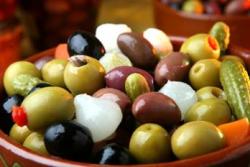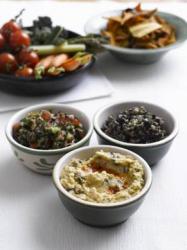 With an estimated 300 million olive trees nationwide and a history with the fruit spanning some 6,000 years, Spain is the world’s leading producer of table olives. Many varieties of olives, available from your local supermarkets will have been grown under the warm Spanish sun, they are an excellent source of vitamin E, fibre and iron.With so many types of Spanish olives on offer, their versatile yet distinct flavours offer a whole host of snack and meal options.
With an estimated 300 million olive trees nationwide and a history with the fruit spanning some 6,000 years, Spain is the world’s leading producer of table olives. Many varieties of olives, available from your local supermarkets will have been grown under the warm Spanish sun, they are an excellent source of vitamin E, fibre and iron.With so many types of Spanish olives on offer, their versatile yet distinct flavours offer a whole host of snack and meal options.
Which variety and colour?
The most common types of Spanish table olive are the Manzanilla, which translates from Spanish as ‘little apple’, Gordal – delicious green olives as big as quails eggs, Hojiblanca, Carrasqueña and Cacereña. All olives actually start out green – the colour and class of the olive corresponds to the ripeness of the fruit when picked. Green olives are picked when ripe, Olives turning colour have been picked before they are completely ripe, and can be dark red, pinkish or brown and Black olives have been picked when not totally ripe and then cured following which they take on their characteristic black colour.
Serving styles and suggestions
 The main serving styles for Spanish table olives are as follows:
The main serving styles for Spanish table olives are as follows:
• Whole or Pitted – just as they come
• Stuffed – pitted olives stuffed with one or more ingredients such as pimento, onion, tuna, anchovy, salmon, almond, etc
• Salads – olives which are pitted and cut in pieces or slices. Can have capers or other ingredients for stuffing
• Slices – pitted or stuffed olives which are cut in cross-section to form rings of similar thickness
• With capers – whole or pitted olives, with or without stuffing, generally of a small size, and accompanied by capers.
Spanish table olives make a great snack or crudités straight from the jar, but why not try some of these simple serving suggestions.
Stir it up
Spanish olives bring added texture and flavour to most dips, sauces, soups and stews. Mix in tapenade sliced, diced or even whole olives to –
Dips: mayonnaise based dips such as Aioli; guacamole; hummus; salsa; taramosalata; tsatsiki – even ketchup.
Sauces or sauce based dishes: béchamel; bolognaise; cheese, chilli (con carne), enchilada, and many more
So, why not get some to eat as a snack or start experimenting to add a new dimension to your favourite dishes.
